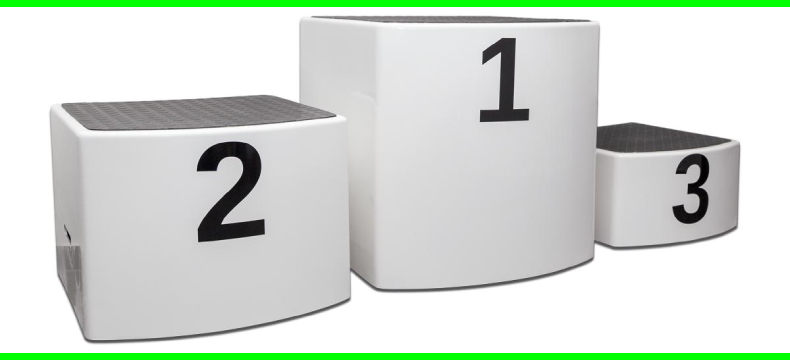
In my corporate personal branding workshops, I actively encourage the participants to share their perspectives online without worrying about how others would react to them. This is, of course, after helping them define their own personal brand narrative and contours and sticking to those themes as consistently as possible.
But, one of the most common reasons/excuse I hear from the participants for not wanting to share their perspective on something/anything is this: “Someone else has already shared it. I saw it on LinkedIn” (or Twitter. Or, a blog… a newsletter, and so on).
I had briefly addressed this element in an earlier post last year titled, Using perspectives to nurture your personal brand.
In that post, I had mentioned this:
A simple thumb-rule to remember is this: when you share something online, do people recall what you shared, or do they also remember who shared it?
The former is very easy. That’s what 99.99% of all people do. It’s so very easy. Add a smiley or a simple context like, “Wow”, “Must-read” etc.
But turn that whole argument on its head and be absolutely selfish in the interest of your own brand: “How can I make people remember that it was I who shared this piece of content that the whole world is already sharing?”.
There is a larger context to this, though.
1. You may never be the first to share anything
Unless it is a personal experience that only you went through, chances are nothing you share anywhere online is likely to make you the first person to share that. The internet has made so many things obsolete and this includes ‘uniqueness’.
Prior to the internet, you looked at catchy, clever newspaper headlines with awe, wondering about the editor’s creativity. Now, chances are that you may have stumbled on that headline the previous day on Twitter when that news was breaking and being shared.
Ditto with cartoons. Cartoonists in newspapers have a tough job being unique and original, to create new frames to communicate their punchy toons because all those frames and perspectives may have been shared by someone/many on social media the previous day!
So, you are not unique with anything you share, most probably. For everything, you would like to share, someone (or many people) would have already done it before you. Do not let that uniqueness stop you from sharing anything online.
2. Same same but different
Ok, having set aside the lack of uniqueness, how do you approach something you want to share?
Consider a piece of news. Say, you are a HR professional. And you stumble upon a piece of news that says that the UK-based fintech start-up Atom Bank is moving to a 4-day work-week without cutting pay! This is actual news, incidentally.
If you search for this news on LinkedIn or Twitter, you may notice that tons of people have already shared this. You may be the 413th person to share it… so why bother being the 413th when you cannot be the 1st, or even the first 10?
Once again, this is not entirely unique to you as a situation.
The earlier examples I gave you, about newspapers, apply to this too. Consider the fact that there are at least 4 financial newspapers in India – The Economic Times, Hindu BusinessLine, Financial Express, and Business Standard. If there is a piece of news in the financial segment in India, imagine a journalist or an editor from Business Standard (my favorite financial newspaper among the 4, by the way) thinking, “Arrey yaar, why bother reporting on this? Economic Times has the largest circulation in the country and they would be reporting on this anyway”.
But they do not think like that, thankfully. They look at it with a slight twist: “Oh yes, Economic Times is obviously going to cover this news and they do have the largest circulation in India. But how can I cover the same news, from a different framing or perspective so that I stand out even in front of the market leader?”.
That should be your spirit too, even if you are not a journalist in a newspaper and are merely sharing something on say, LinkedIn. Imagine yourself to be your own LinkedIn newspaper and competing with so many other LinkedIn newspapers that have 100X more readership or followers than you. What is your value-add to the same piece of news that would make your perspective stand out?
3. The world is very, very… very large!
I had addressed this point in an earlier post titled, The power of invisible, silent audience.
When you see someone else sharing the same piece of news that you intended to share, the thought process is specifically this: That person has shared this. She has 10X more followers than me on LinkedIn (to name just one platform). If I share this too, that would be a repetition to people and they may think less of me as a result.
This is an incorrect assumption, through and through.
Just to take LinkedIn alone, the platform has 7 crores and 80 lakh users in India. So your assumption that another person’s post on the topic you wanted to write about has been seen by everyone is deeply flawed. The world is much larger than that. The overlap between people who saw that person’s post and may also see your potential post could be tiny.
But don’t even consider that overlap as your excuse. Ignore the overlap and focus exclusively on what you bring to the same topic. The entire premise of personal branding is around unique perspectives, not unique news.
However, even if a certain perspective has been shared already, consider unique framing and articulation! Perspectives need not be unique either, so can you frame your perspective differently, with differently thought-out lines that add to the readers/ understanding of the subject?
